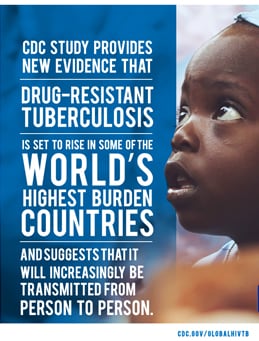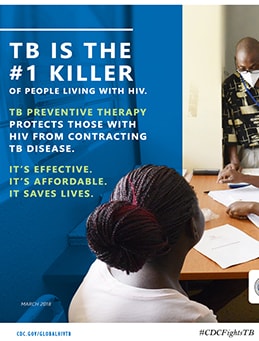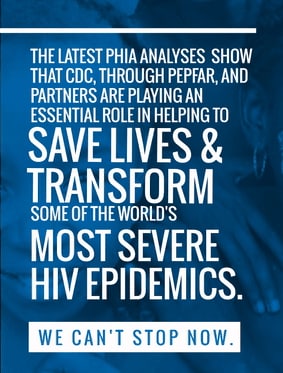Colombia Country Profile

Colombia Country Profile
Discover more about CDC’s work in Colombia by viewing our detailed country profile
Per Capita GNI
$6,160
(2021)
Population (million)
51.27
(2021)
Under 5 Mortality
13.2/1,000 Live Births
(2020)
Life Expectancy
77.5 Years
(2021)
Estimated HIV Prevalence
0.5%
(Ages 15-49): (2021)
Estimated AIDS Deaths
1,500
(Age≥15) (2021)
TB Treatment Success Rate
84%
(2018)
Estimated TB Incidence
137/100,000
(2019)
Estimated Orphans Due to AIDS
53,000
(2022)
TB patients with known HIV-status who are HIV-positive
14%
(2020)
Reported Number Receiving Antiretroviral Therapy (ART)
126,709
(Age≥15) (2021)
Strategic Focus
The Centers for Disease Control and Prevention (CDC) has had a long-standing partnership, since 2002, with the Democratic Republic of Congo (DRC) Ministry of Health (MOH). Since the launch of the U.S. President’s Emergency Plan for AIDS Relief (PEPFAR) in 2003, this partnership rapidly expanded and today is in alignment with 95-95-95 global objectives, strategically focusing on:
• HIV prevention and treatment: summarized in “test and start” approach
• Integration of HIV and Tuberculosis (TB) treatment
• Strengthening public health system, health information systems, laboratory capacity, and health workforce development.
• Strengthening Orphan and Vulnerable Children (OVC) activities toward epidemic control
Strengthening Public Health Systems
CDC provides technical and financial assistance for sustainable epidemic control to the MOH in the areas of service delivery and policy development. Through CDC support, MOH is empowered to provide comprehensive and integrated HIV services in the Haut-Katanga and Kinshasa provinces.
Strengthening Laboratory Systems
CDC builds capacity of laboratory functions including diagnostics and quality management systems. CDC scales up laboratory infrastructures to meet the increasing needs for viral load and emerging infectious diseases (EID) primarily in PEPFAR focus areas and secondarily in other surrounding provinces. Moreover, CDC implemented an in-country development program for laboratory accreditation. During Fiscal Year (FY) 2018, five additional laboratories (including TB national molecular lab) will enroll in the laboratory accreditation program, bringing the total number of 11 laboratories engaged in the accreditation process.
Strengthening Surveillance and Health Information Systems
CDC supports the innovative use of HIV electronic reporting system (MESI) and provides support to increase capacity in the health management information systems.
Key Activities and Accomplishments
ART Services: CDC has helped strengthen the scope and quality of antiretroviral treatment (ART) services for adults and children. As of FY 2017, CDC has (32,119) PLHIV on treatment (PEPFAR Annual Progress Report, 2017). CDC also significantly contributes to the adoption of the “test and start” approach and new national HIV management guidelines.
Prevention of Mother-to-Child Transmission (PMTCT): CDC experts contributed to eMTCT plan, option B+ pilot and scale-up phases, all resulting in increased availability of option B+ Services in DRC. In FY 2017, CDC had (1,555) pregnant women on ART (PEPFAR Annual Progress Report, 2017).
Orphan and Vulnerable Children (OVC): CDC aims to keep children safe, healthy, stable and schooled. Through CDC support, in FY 2017 8,092 OVC received services to improve their well-being.
TB/HIV Integration: CDC helps in the development of Tuberculosis infection control national plan, promotes Isoniazid Preventive Therapy (IPT) and supports TB case identification (including through Xpert). Under CDC support 970 TB/HIV patients co-infected received ART (PEPFAR Annual Progress Report, 2017).
Viral load (VL): CDC increased capacity and access for EID and VL testing. In FY 2017, PEPFAR supported laboratories processed 19,807 samples (61.83% coverage) for VL.
Key populations: FY 2017, resulted in over 14,000 Female Sex Workers (FSW) and Men who have Sex with Men (MSM) tested for HIV, resulting in 568 positives. Of these positive, 511 were initiated on ART. The remaining HIV negative clients were supported to stay negative.

Social Media Card
CDC study provides new evidence that Drug-Resistant Tuberculosis is set to rise in some of the world’s highest burden countries.

Social Media Card
TB is the #1 killer of people living with HIV. TB preventative treatment protects those with HIV from contracting TB Disease. It’s effective, It’s affordable. It saves lives.

Social Media Card
The latest PHIA analyses show that CDC, through PEPFAR, and partners are playing and essential role in helping to save lives & transform some of the world’s most severe HIV epidemics